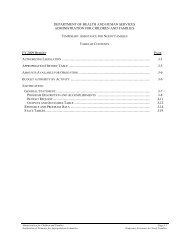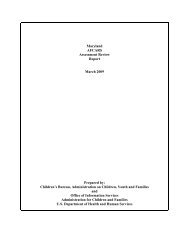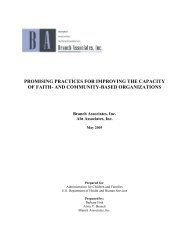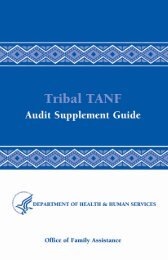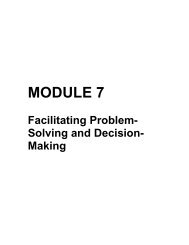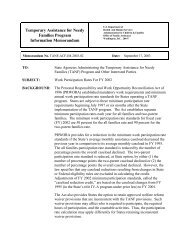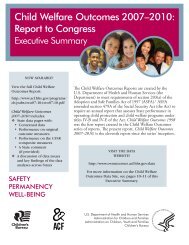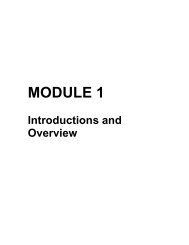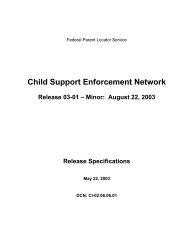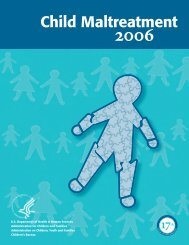Final Report of the Subcommittee on Domestic Trafficking
Final Report of the Subcommittee on Domestic Trafficking
Final Report of the Subcommittee on Domestic Trafficking
You also want an ePaper? Increase the reach of your titles
YUMPU automatically turns print PDFs into web optimized ePapers that Google loves.
APPENDIX II: INPUT FROM NON-GOVERNMENTAL ORGANIZATIONSIn an effort to learn about <str<strong>on</strong>g>the</str<strong>on</strong>g> differences in how domestic and internati<strong>on</strong>al victims <str<strong>on</strong>g>of</str<strong>on</strong>g>trafficking are treated in practice, <str<strong>on</strong>g>the</str<strong>on</strong>g> <str<strong>on</strong>g>Subcommittee</str<strong>on</strong>g> solicited <str<strong>on</strong>g>the</str<strong>on</strong>g> input <str<strong>on</strong>g>of</str<strong>on</strong>g> n<strong>on</strong>governmentalorganizati<strong>on</strong>s that have experience providing services to victims. Thefollowing are <str<strong>on</strong>g>the</str<strong>on</strong>g> resp<strong>on</strong>ses that were received (<strong>on</strong> a voluntary basis):NGO INPUT 1: Rachel Lloyd, GEMSI am <str<strong>on</strong>g>the</str<strong>on</strong>g> founder and executive director <str<strong>on</strong>g>of</str<strong>on</strong>g> Girls Educati<strong>on</strong>al and Mentoring Services,(GEMS), <str<strong>on</strong>g>the</str<strong>on</strong>g> <strong>on</strong>ly n<strong>on</strong>-pr<str<strong>on</strong>g>of</str<strong>on</strong>g>it agency within New York State designed specifically toprovide counseling, support, case management, emergency housing, and viableeducati<strong>on</strong>al and vocati<strong>on</strong>al opportunities to sexually exploited girls and young women,ages 12-21. GEMS was founded in January 1999, out <str<strong>on</strong>g>of</str<strong>on</strong>g> an overwhelming need forservices for adolescent girls that I observed while working with adult women exitingprostituti<strong>on</strong>. GEMS is located in Central Harlem, but serves girls from all five boroughs<str<strong>on</strong>g>of</str<strong>on</strong>g> New York City. GEMS provides crisis and transiti<strong>on</strong>al services to over 170 sexuallyexploited girls and young women each year and also provides preventive educati<strong>on</strong> andtraining to over 2,000 youth and adults each year. The majority <str<strong>on</strong>g>of</str<strong>on</strong>g> <str<strong>on</strong>g>the</str<strong>on</strong>g> girls that come toGEMS are ei<str<strong>on</strong>g>the</str<strong>on</strong>g>r mandated or referred through <str<strong>on</strong>g>the</str<strong>on</strong>g>ir experiences with criminal or juvenilejustice system. Over 90 percent <str<strong>on</strong>g>of</str<strong>on</strong>g> GEMS members are Black, approximately 5 percentare Latino and 5 percent are White.<strong>Domestic</strong> girls are trafficked from area to area, State to State although this is rarelyrecognized as trafficking per se. A well established trafficking route from Bost<strong>on</strong> to NewYork to Washingt<strong>on</strong>, D.C., to Atlanta to Miami brings girls up and down <str<strong>on</strong>g>the</str<strong>on</strong>g> East Coast,<str<strong>on</strong>g>of</str<strong>on</strong>g>ten depending <strong>on</strong> <str<strong>on</strong>g>the</str<strong>on</strong>g> warm wea<str<strong>on</strong>g>the</str<strong>on</strong>g>r in various locati<strong>on</strong>s. Whilst <str<strong>on</strong>g>the</str<strong>on</strong>g>re has been adramatic increase in <str<strong>on</strong>g>the</str<strong>on</strong>g> attenti<strong>on</strong> and funding given to trafficking programs nati<strong>on</strong>ally,domestic youth c<strong>on</strong>tinue to be largely ignored in <str<strong>on</strong>g>the</str<strong>on</strong>g> legislati<strong>on</strong>, funding and servicescovered by <str<strong>on</strong>g>the</str<strong>on</strong>g> <strong>Trafficking</strong> Victims Protecti<strong>on</strong> Act. C<strong>on</strong>trary to being viewed as victims,sexually-exploited young women are seen as criminals or delinquents and as willingparticipants in <str<strong>on</strong>g>the</str<strong>on</strong>g>ir own abuse. It is indicative <str<strong>on</strong>g>of</str<strong>on</strong>g> <str<strong>on</strong>g>the</str<strong>on</strong>g> double standards inherent in currentattitudes towards domestic sexually exploited youth that in New York a young pers<strong>on</strong>under <str<strong>on</strong>g>the</str<strong>on</strong>g> age <str<strong>on</strong>g>of</str<strong>on</strong>g> 17 cannot legally give informed c<strong>on</strong>sent to sexual c<strong>on</strong>tact, yet if <str<strong>on</strong>g>the</str<strong>on</strong>g>young pers<strong>on</strong> is deemed as a “prostitute” <str<strong>on</strong>g>the</str<strong>on</strong>g>n not <strong>on</strong>ly is she/he believed able to givec<strong>on</strong>sent, but will also be charged with a violati<strong>on</strong> or misdemeanor. Therefore, under <strong>on</strong>epart <str<strong>on</strong>g>of</str<strong>on</strong>g> <str<strong>on</strong>g>the</str<strong>on</strong>g> penal code a young woman is a victim <str<strong>on</strong>g>of</str<strong>on</strong>g> statutory rape protected from adultexploiters, under ano<str<strong>on</strong>g>the</str<strong>on</strong>g>r she is a “prostitute” automatically mature enough to giveinformed c<strong>on</strong>sent to her own exploitati<strong>on</strong>Current policies towards, and <str<strong>on</strong>g>the</str<strong>on</strong>g> depicti<strong>on</strong> <str<strong>on</strong>g>of</str<strong>on</strong>g> sexually exploited young women in <str<strong>on</strong>g>the</str<strong>on</strong>g>U.S., are reflective <str<strong>on</strong>g>of</str<strong>on</strong>g> societal attitudes towards class and race and <str<strong>on</strong>g>the</str<strong>on</strong>g> impact <str<strong>on</strong>g>the</str<strong>on</strong>g>y have<strong>on</strong> a collective understanding <str<strong>on</strong>g>of</str<strong>on</strong>g> childhood/youth and adolescence. Distincti<strong>on</strong>s are madebetween poor “children” abroad and poor “youth” in <str<strong>on</strong>g>the</str<strong>on</strong>g> U.S., and even at home betweenmiddle-class “victims” and low-income, predominately young women <str<strong>on</strong>g>of</str<strong>on</strong>g> color who are59



